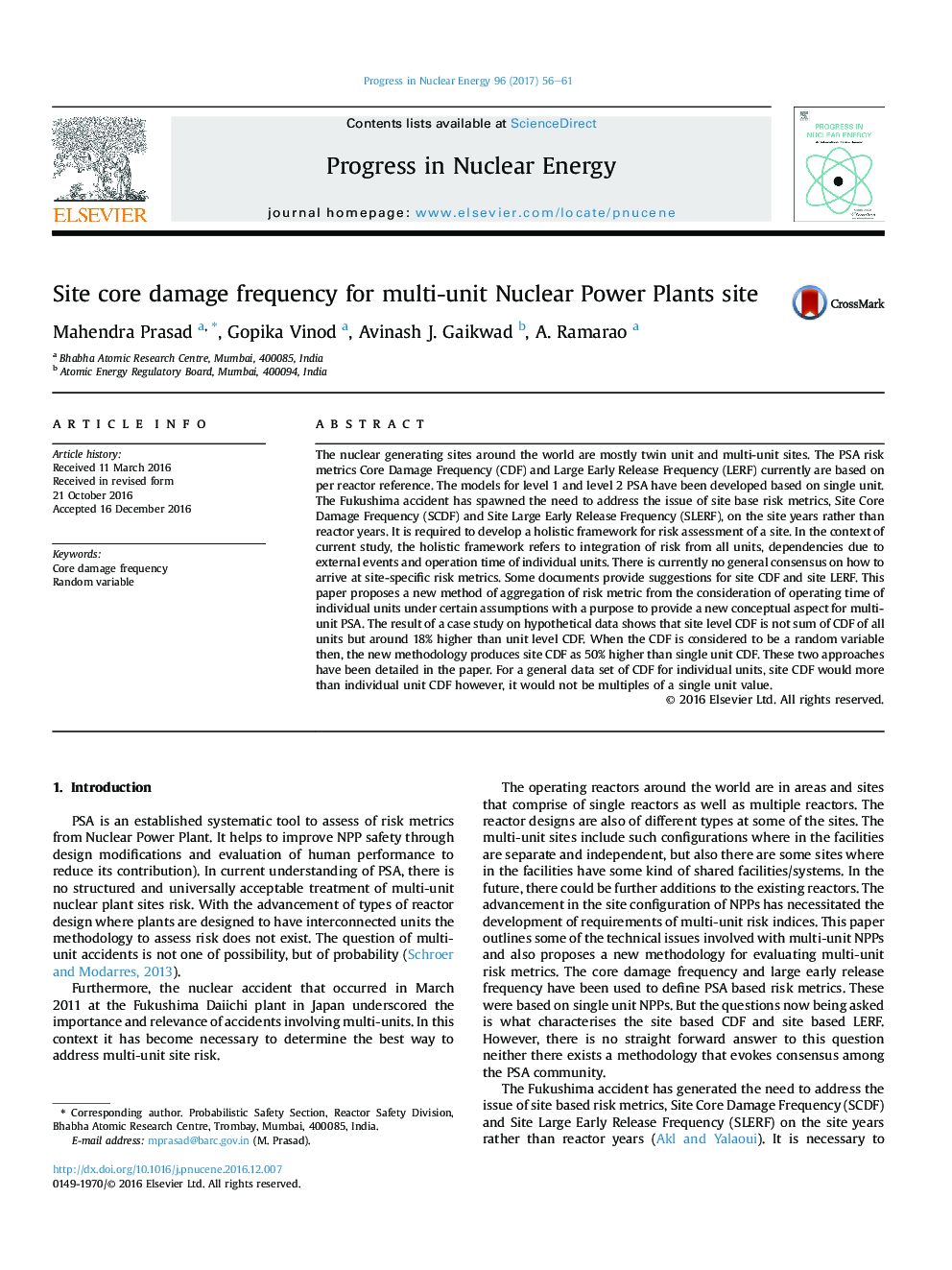| Article ID | Journal | Published Year | Pages | File Type |
|---|---|---|---|---|
| 5478107 | Progress in Nuclear Energy | 2017 | 6 Pages |
Abstract
The nuclear generating sites around the world are mostly twin unit and multi-unit sites. The PSA risk metrics Core Damage Frequency (CDF) and Large Early Release Frequency (LERF) currently are based on per reactor reference. The models for level 1 and level 2 PSA have been developed based on single unit. The Fukushima accident has spawned the need to address the issue of site base risk metrics, Site Core Damage Frequency (SCDF) and Site Large Early Release Frequency (SLERF), on the site years rather than reactor years. It is required to develop a holistic framework for risk assessment of a site. In the context of current study, the holistic framework refers to integration of risk from all units, dependencies due to external events and operation time of individual units. There is currently no general consensus on how to arrive at site-specific risk metrics. Some documents provide suggestions for site CDF and site LERF. This paper proposes a new method of aggregation of risk metric from the consideration of operating time of individual units under certain assumptions with a purpose to provide a new conceptual aspect for multi-unit PSA. The result of a case study on hypothetical data shows that site level CDF is not sum of CDF of all units but around 18% higher than unit level CDF. When the CDF is considered to be a random variable then, the new methodology produces site CDF as 50% higher than single unit CDF. These two approaches have been detailed in the paper. For a general data set of CDF for individual units, site CDF would more than individual unit CDF however, it would not be multiples of a single unit value.
Keywords
Related Topics
Physical Sciences and Engineering
Energy
Energy Engineering and Power Technology
Authors
Mahendra Prasad, Gopika Vinod, Avinash J. Gaikwad, A. Ramarao,
